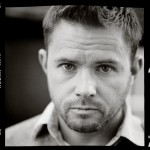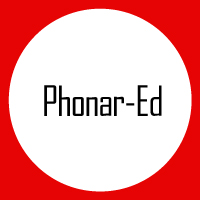

Jonathan Worth is a freelance commercial photographer who has shot numerous celebrities and whose work is on permanent collection at the UK’s National Portrait Gallery. Four years ago, he opened his Coventry University photography class to the world via a WordPress blog, Twitter, and now an app. He is dealing directly with changing business models, both in photography and education, and the role of the photographer as a publisher. www.phonar.covmedia.co.uk
Q: Why did you decide to open up your class?
A: I was a relatively successful photographer. I still work for the Times a bit. But when I got asked to teach classes there was no way I could teach the same way I’d been taught. The students see a guy with a studio in New York who shoots famous people, blah blah blah. That’s last century’s business model. The model is defunct.
The question is, what is an appropriate way to teach and stuff to be teaching? It suddenly became clear that the photographer and the teacher were in the same boat. My photos, which had been scarce products, turned into images, which became superabundant and the price fell through the floor. The same thing for teachers–knowledge is no longer the product. It’s pretty much open season on traditional education. There has to be some pretty big changes if we’re going to make it sustainable and actually relevant.

Q: So it was a way of being honest with your students about what had changed in the professions—both teaching and photography. And exposing a bit of your own learning process as well?
A: I had a great mentor—[sci-fi writer and open culture advocate] Cory Doctorow. I’d photographed him and I said Jesus, Cory, so you’re giving books away for free but still making money. How do I do that? I read Chris Anderson’s book Free, and started to read as much as I could. I don’t talk much about “free” any more though. I got really negative feed back from people saying I was ruining the business model and that people like me were the reason the photography business was dying. I try not to use “open” either. I try to use “connected.”
Q: How did you get started with the technical side of open learning? What technologies have been useful to you as you’ve continued?
A: It was a brutal learning experience, terrifying. I didn’t even know how to write a blog. I opened up a blog, put up one post, it got longer and longer and that was the course. I wrote up each session, I put up all the material I had online. I was learning about Creative Commons and what I could and couldn’t put online. I’d find workarounds and link to Youtube and embed it and it just became one big post and people started to comment. Then I started to use Twitter to tune the network. It’s a great listening device. Twitter is so ephemeral, but a way to engage people who are disaggregated at the moment. That was so powerful–to listen first and then to engage.
Q: So it sounds like the structure has been informed by pragmatics as well as the needs of the community.
A. The university doesn’t need to take ownership of this, and I can’t afford the server space. We have to go where the fish already swim: Twitter, Flickr, Soundcloud, YouTube, Vimeo. The blog is really just a hub. It aggregates everybody’s stuff from all over the world and redirects the audience back out to those people. We encourage everybody to make their own blogs so they can take the traffic back to their sites.
Q: During the last 10-week session of #phonared, you had 35,000 visitors to the WordPress site. How is the “massive” open aspect of the experience reflected in the structure of the face-to-face class?
A: Every week in our class I present a taped interview with someone from the industry. Everyone listens with headphones at their own pace. This is an open-admissions institution. We have an incredible amount of kids with dyslexia and English language learners. So they listen to the recording and Tweet their notes. I aggregate and Storify the tweets and they can see all the people globally listening at the same time. So the classroom is part of this massive conversation. I draw out the shy ones and make them center stage. We get professional photographers and celebs to chip in Tweets as well. So the students in the class can see their stuff up with some guy working in New York, and they’ll be midway through a conversation and this guy’s responding. When they do that for the first time, that’s my Christmas morning.
Q: What are some of the themes you cover in the class?
A: The class is about visual literacy first and foremost. And digital fluency. We want people to understand why an image might convince people. Where is it going to sit? Why is it appropriate to engage people in this image or that one?
Q: What kinds of impact do you see PhonarEd having on students both in the traditional classroom and in the open community?
A: I had a girl who graduated from Coventry this year. She was told she’d never go to university but I took her on cause [because] she was so driven and feisty. She was so profoundly dyslexic, her writing looked like hieroglyphics she nearly failed the first year. She says this open class is learning for dyslexics because it’s so varied. You can download the audio, look at the film, do the writing if you want to.
One guy who works with Doctors without Borders and the Red Cross hired someone during the class. He said, I’m shopping for talent in your class because they have a unique skill set—they’re visual journalists who use images and sound, they’re challenging single point narrative and willing to act as curators. He also liked the fact that they’re distributed around the globe.
There’s lots of stories. One girl from Poland went on to assist Annie Leibowitz in New York. Another student worked for Lars Von Trier.
Q: So you’re seeing learning benefits as well as practical benefits. What is your relationship to the university like?
A: The two people that took me in and got me the job at Coventry were Shaun Hides and Jonathan Shaw . They’ve seen it through from the beginning. They hid what I was doing at first and they sheltered me when I had to reveal it cause I’d broken the university servers. Up until now it had been largely me on my own with a bit of TA assistance. Everything had to be done back-bedroom and on our own time. It’s only last year we got some time and money through JISC (a nonprofit advancing information technology in UK education and research) .
Q: And you’re partnering beyond Coventry too, with the World Photography Organization this fall. How is that working?
A. The WPO does the World Press Photo Award. It’s the biggest thing in photojournalism. They started doing this education program, but they were going into it with this competition mentality—five people get to do this course. I’m trying to get them to see that if they made this open they could teach more than five people. Their brand is about excellence and quality and maintaining standards. When I say let’s run this in beta, that’s not easy for them, but we’re teaching citizen journalists in North Africa which is pretty scary. There are language and cultural barriers. At the same time, you’re changing lives with the stuff you’re doing–this is applied and you see the effects. What could be more f*** exciting than that?
Posted in Uncategorized |
